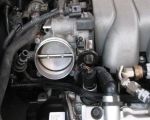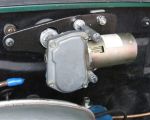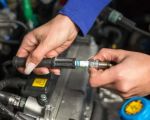- 1. Understanding the Role of the Air Conditioning Hose
- 2. Signs of a Broken Air Conditioning Hose
- 3. Tools You Need to Fix an Air Conditioning Hose
- 4. Step-by-Step Guide to Fixing a Broken Air Conditioning Hose
- 5. Real-Life Case Study: How Timely Repairs Saved the Day
- 6. When to Seek Professional Help for a Broken Air Conditioning Hose
1. Understanding the Role of the Air Conditioning Hose
The air conditioning hose in your car plays a crucial role in the functioning of the HVAC (Heating, Ventilation, and Air Conditioning) system. This hose carries refrigerant through the air conditioning system, allowing the refrigerant to absorb and release heat, which helps keep your car cool in hot weather. The hose connects various components of the air conditioning system, such as the compressor, evaporator, and condenser. A broken hose can lead to refrigerant leaks, resulting in reduced cooling efficiency or complete system failure.
2. Signs of a Broken Air Conditioning Hose
When an air conditioning hose breaks, it can lead to several symptoms that are noticeable while driving. Here are some common signs that you may have a broken air conditioning hose:
- Weak or No Cooling: If the air conditioning system is not cooling as effectively as it once did, a broken hose could be the cause.
- Strange Smells: A broken hose may cause refrigerant to leak, which can result in a noticeable chemical or musty odor coming from the vents.
- Hissing Sounds: If you hear a hissing sound from the air conditioning system, it may indicate that refrigerant is leaking due to a broken hose.
- Visible Damage: In some cases, you may notice visible cracks, holes, or wear on the air conditioning hose, which can confirm the issue.
If you notice any of these signs, it’s important to take action quickly to avoid further damage to the air conditioning system.
3. Tools You Need to Fix an Air Conditioning Hose
Fixing a broken air conditioning hose can be done with the right tools. Here’s a list of what you’ll need:
- Replacement Hose: You’ll need a new hose that is compatible with your vehicle’s air conditioning system.
- Refrigerant Recovery Kit: Before replacing the hose, you need to safely remove any remaining refrigerant from the system using a recovery kit.
- Wrenches and Pliers: You’ll need wrenches or pliers to loosen and tighten the fittings on the hose and ensure a secure connection.
- Sealant and Teflon Tape: Depending on the type of hose, you may need sealant or Teflon tape to ensure the fittings are secure and leak-free.
- Manifold Gauges: These gauges are used to measure the pressure in the air conditioning system and help you determine whether the new hose is properly installed and functioning.
With the right tools, you can attempt a DIY fix, but if you’re not confident in your abilities, it may be best to leave the job to a professional mechanic.
4. Step-by-Step Guide to Fixing a Broken Air Conditioning Hose
Here’s a step-by-step guide to fixing a broken air conditioning hose:
- Step 1: Turn Off the Vehicle and Disconnect the Battery: For safety, turn off the vehicle and disconnect the negative terminal of the battery to prevent any electrical issues during the repair process.
- Step 2: Recover the Refrigerant: Use the refrigerant recovery kit to safely remove any remaining refrigerant from the system. This step is essential to avoid harming the environment or damaging your air conditioning components.
- Step 3: Remove the Broken Hose: Use the appropriate wrenches or pliers to remove the broken hose from its fittings. Be careful not to damage other parts of the system.
- Step 4: Install the New Hose: Attach the new hose to the air conditioning system, ensuring that all fittings are tight and secure. Use sealant or Teflon tape if necessary to prevent leaks.
- Step 5: Refill the System with Refrigerant: After the new hose is securely in place, refill the system with refrigerant. Use the manifold gauges to ensure the correct pressure is achieved.
- Step 6: Test the System: Turn on the vehicle and test the air conditioning system to make sure it’s working properly. Check for any leaks around the new hose and ensure that the system is cooling efficiently.
While fixing a broken air conditioning hose can be a DIY project, it requires careful attention to detail. If you're unsure about any part of the process, it's always a good idea to seek professional help to avoid causing further damage to your system.
5. Real-Life Case Study: How Timely Repairs Saved the Day
Take the case of Lisa, a driver who was stranded on a hot summer day when her air conditioning suddenly stopped working. She noticed that the air conditioning system was blowing warm air, and after a quick inspection, she discovered a crack in the air conditioning hose. She immediately called a professional service. The mechanic was able to replace the broken hose within a few hours, and Lisa was back on the road with cool air blowing in her car once again. This timely repair not only saved her from discomfort but also prevented further damage to the air conditioning system, which could have been costly.
This case shows the importance of addressing air conditioning issues promptly and highlights the value of professional repair services when necessary.
6. When to Seek Professional Help for a Broken Air Conditioning Hose
While replacing an air conditioning hose can be a DIY project for some, there are situations where professional help is necessary. You should seek professional assistance if:
- You’re unsure how to handle refrigerant: Refrigerant handling requires specialized equipment and knowledge. If you’re not equipped to safely recover and recharge the system, it’s best to leave it to the pros.
- The hose damage is severe: If the hose has caused significant damage to other parts of the system, a professional will be needed to assess and repair the damage.
- You lack the proper tools: Some air conditioning repairs require specialized tools, like manifold gauges, that may not be easily accessible for a DIYer.
When in doubt, always seek professional help to ensure the job is done right, protecting both your vehicle and your comfort.


























